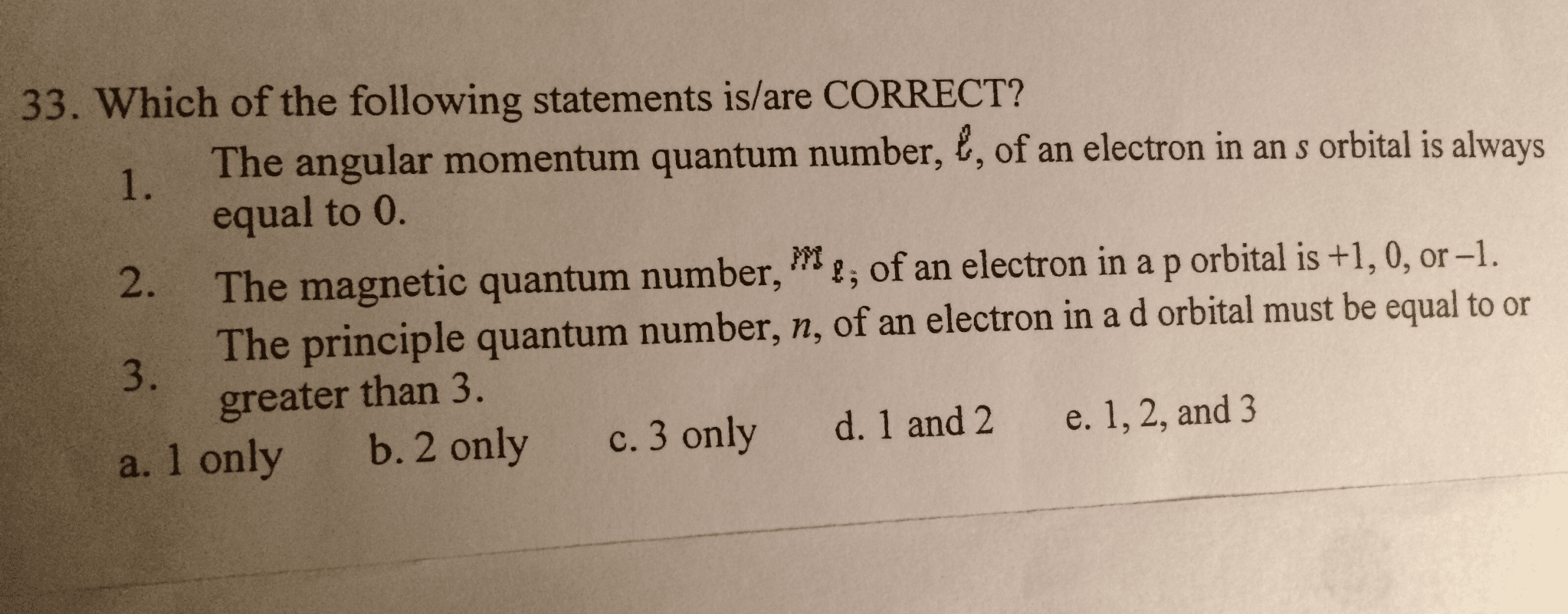CHEM 112 Lecture Notes - Lecture 3: Magnetic Quantum Number, Principal Quantum Number, Pauli Exclusion Principle
Document Summary
Larger n, larger orbital: angular momentum quantum number (l) angular distribution or shape of orbital. Possible integral values from 0 to (n-1) l=0, s orbital l=1, p orbital l=2, d orbital: magnetic quantum number (ml) orientation of orbital. Possible integral values of l to +l l=0, ml=0 (1 s orbital) l=1, ml=-1,0,1 (3 p orbitals) l=2, ml=-2,-1,0,1,2 (5 d orbitals: spin quantum number (ms) spinning motion of specific electron, clockwise or counterclockwise. Experiment: if a beam of hydrogen atoms with a single electron passes through field, atoms would be deflected in one direction or the other depending on direction of electron spin. No two electrons in an atom can have identical quantum numbers. Each orbital can have at most 2 electrons in opposite spin. The max number of electrons that can be found in any energy level: emax = 2n2. Provide the foundation for chemical bonding, may be used to explain molecular shape.



